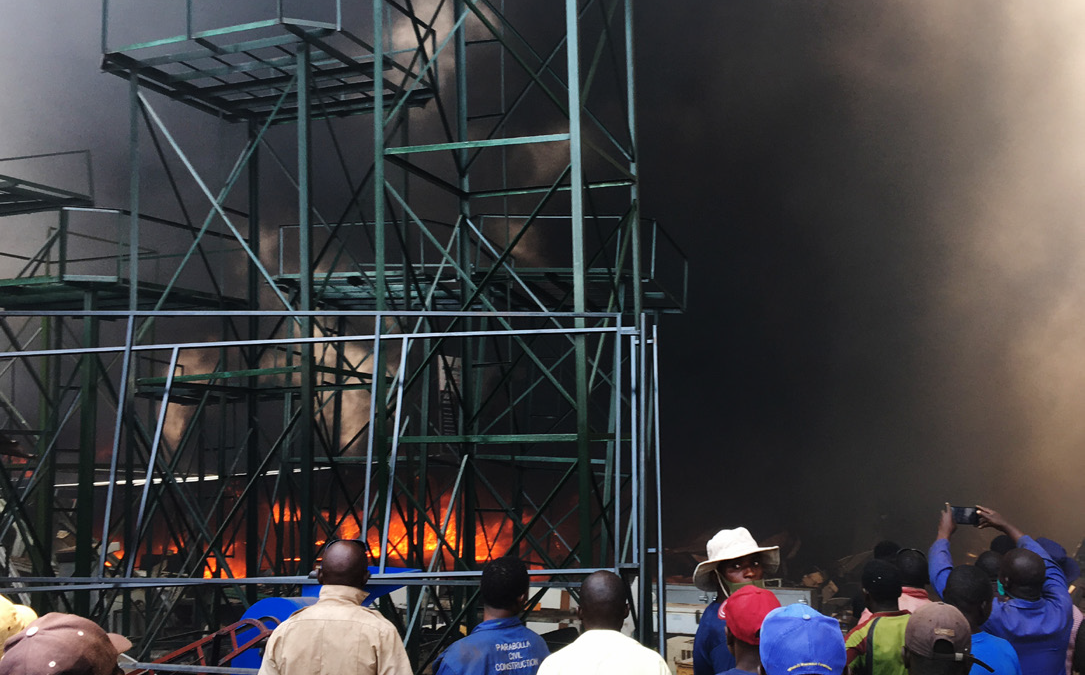Conflagration of a building also known as structural fire is an uncontrolled fire occurring in the built-up area of towns and cities, destroying infrastructure, and in many cases causing loss of human life.
Sustainable Development Goal 11 has a target of “making cities inclusive, safe, resilient and sustainable”. The world is becoming more urbanized and over half of the world population is estimated to be living in urban areas. This also equates to increased demand for space, a growing number of slum dwellers and structures, overburdened structures, poor waste management and an unplanned urban sprawl. Such urban setups favour the outbreak and easy spread of urban fires and calls for urgent attention as nations aim at achieving the set Global Goals.
Fire outbreaks have become a common norm in today’s cities with historical fires such as those of California, Tokyo, and Lagos among other world cities. Urban infrastructure has always been affected by incidents of infernos bringing need to increase support on awareness, preparedness and rapid response. This would help solve the problem of late discovery and enhance quick detection of fire before the damage becomes extensive.
“It started as an electrical fault, a small spark and a smell from our kitchen. We tried to switch off the sockets and put out the small fire using water, however, the situation worsened when gas tanks exploded, we had to run outside and call for help but it was too late”. “Street Kids were warming themselves burning old tires and papers. They just left the fire unattended only to realize later that it had turned into a huge fire. They then disappeared and no one knows them by name”. These are eyewitnesses of recent infernos.
Urban fire spread is highly variable and under the right combination of unlucky but possible circumstances having many ignitions that can be avoidable and eliminated. Such include faulty wiring, reckless use of electrical appliances and heating gadgets, unattended stoves and gas cookers, children playing with matches, smoking and reignited discarded cigarettes that are not properly extinguished, damaged electrical conductors, overloaded sockets, extension cords, blown fuses, low quality electrical equipment, malfunction of electrical devices, loose electrical connections and lack of clearance between electrical heating devices and combustible material. Poorly designed fireplaces inside homes, heaters inside offices, street kids carelessly starting fire, collision during accidents are among other noted causes.
Cities tend to have a setup that fuels up the fire to become uncontrollable. Talk of many wooden structures in the market places, at the backyard of structures, in corridors and street pavements. Talk of heaps of old tyres in the market place and backyard office. Large drums of used oils, petroleum reserves in plastic containers all stored under unsafe conditions. Poor waste management with illegal dumping in corridors close to structures and open spaces. Illegal parking bays and garages popping up almost everywhere. The setup, however, only requires an ignition to cause great disaster. This is coupled by the fact that the places are not easily accessible even by the fire fighters; the facilities don’t have water and fire assembling points.

A recent inferno in Harare’s Siyaso market on the 5th November 2020. Property worth thousands of dollars was destroyed
The losses are very high, much higher than expected and many would think twice especially investing in such environments considering the possibility of damage to property, loss of life, breaking up of economic activities, environmental pollution, exposure to dangerous and poisonous gases. Very emotional stories come from those that have been affected.
It is time to consider supporting (financially and morally) urban anti-fire capabilities. Families, businesses, owners of building and the authorities through construction of convenient fire stations, efficient water supply facilities, effective communication before, during and after an inferno, cleared marked routes for fire-fighting, all business units having a fire management plan, fire equipment, emergency medical services , fire training and distant monitoring of urban fire; training program in hotspot areas, relief capability in emergency evacuation, assessing safety of buildings, considering the density of people concentration in an area, equipping wireless communication facilities for fire, safety management in crowded place, including fire management in school curriculum, construction of buildings with fireproof materials, documentation of fire disasters towards improvement on monitoring and eliminating future disasters.
Reconstruction after a major urban conflagration should always result in the adoption of at least building back better, rather than making a temporary shelter or slum and ensure we make our cities inclusive, safe, resilient and sustainable.



